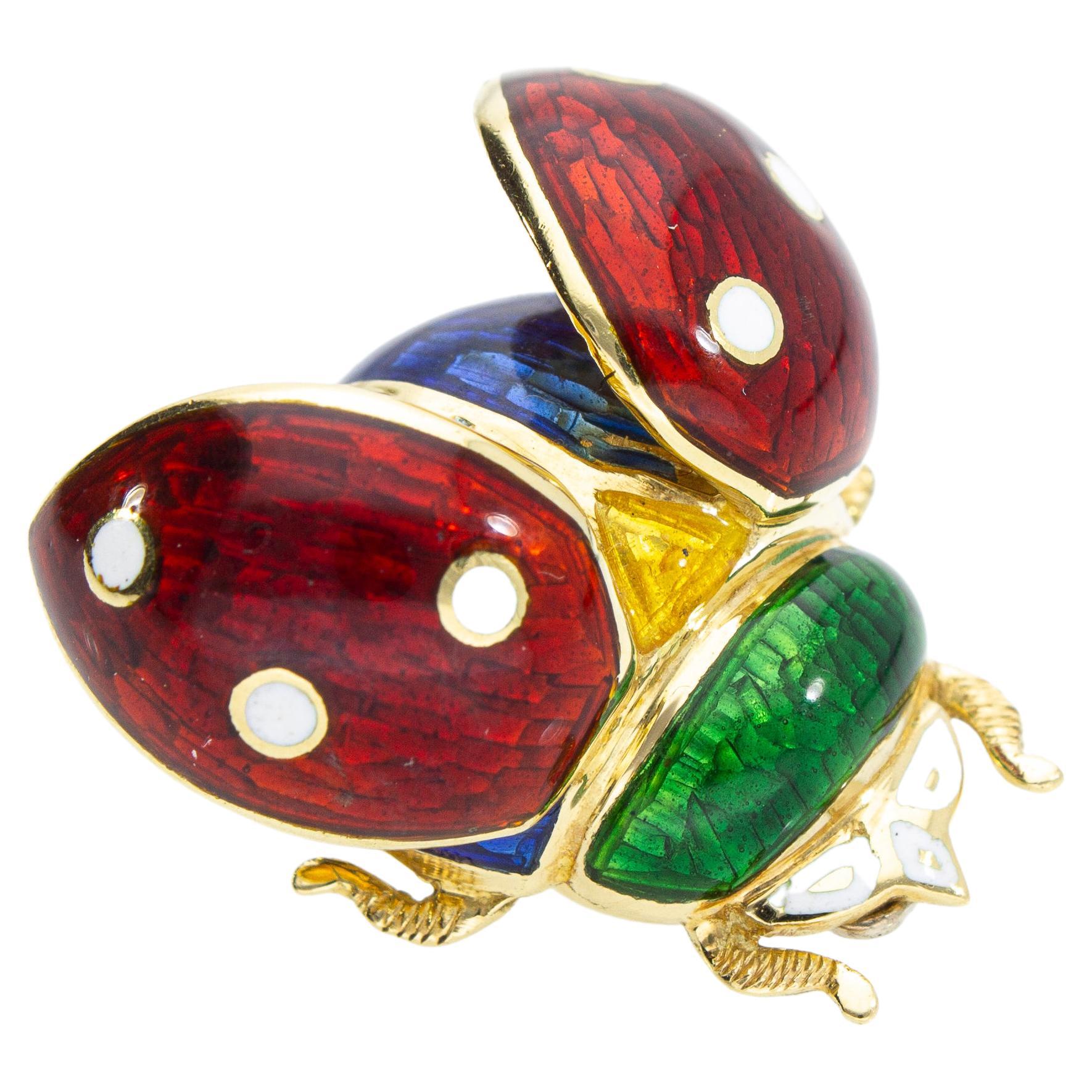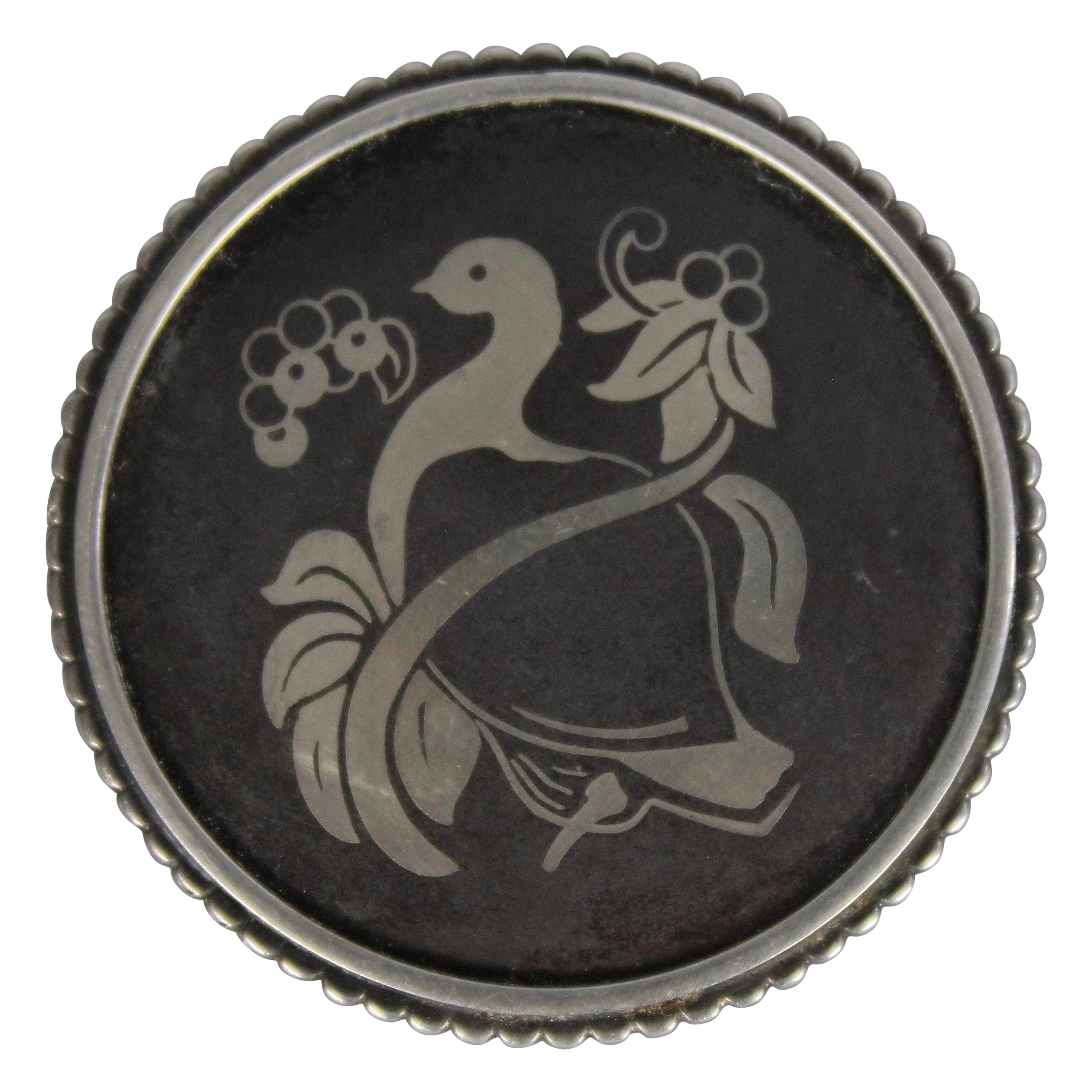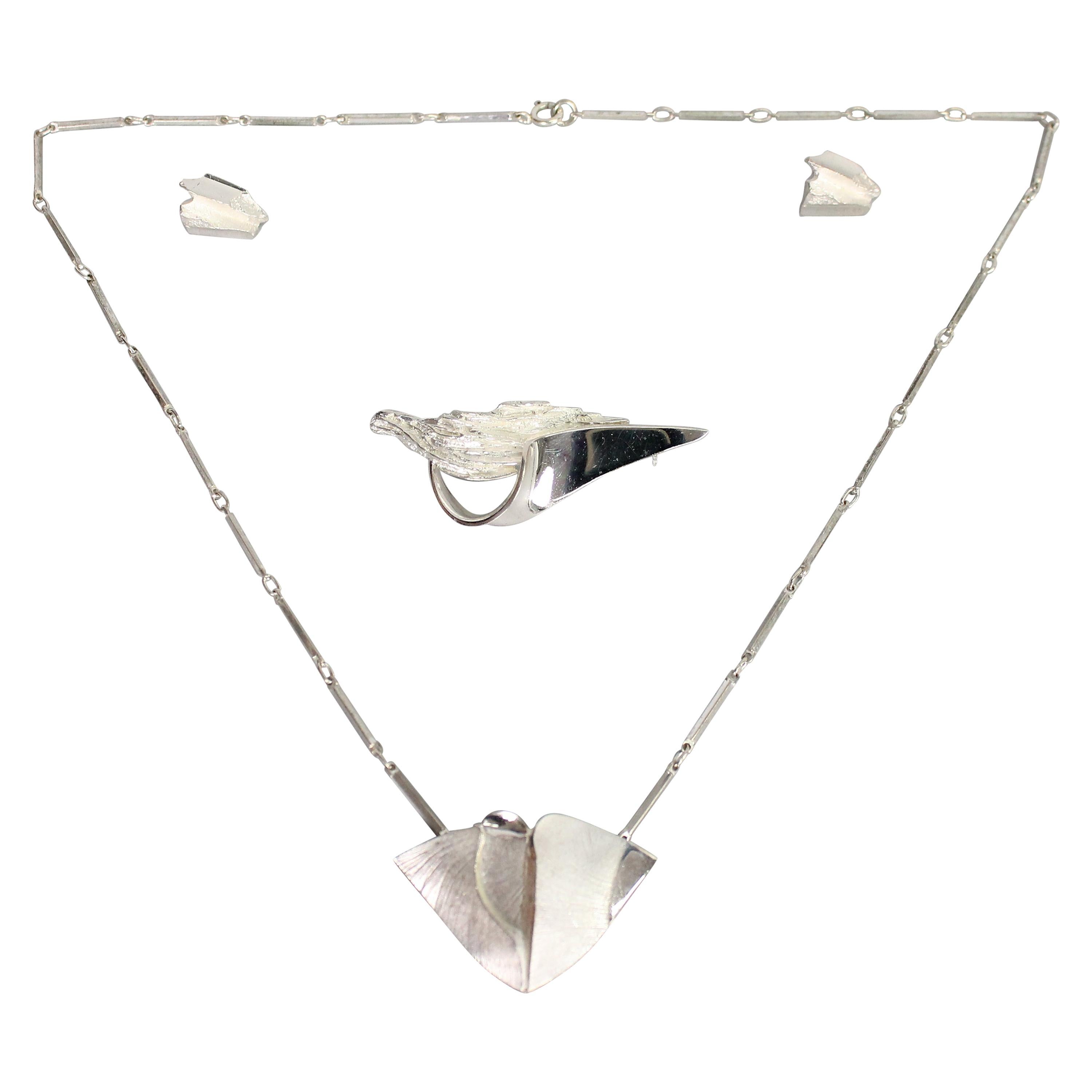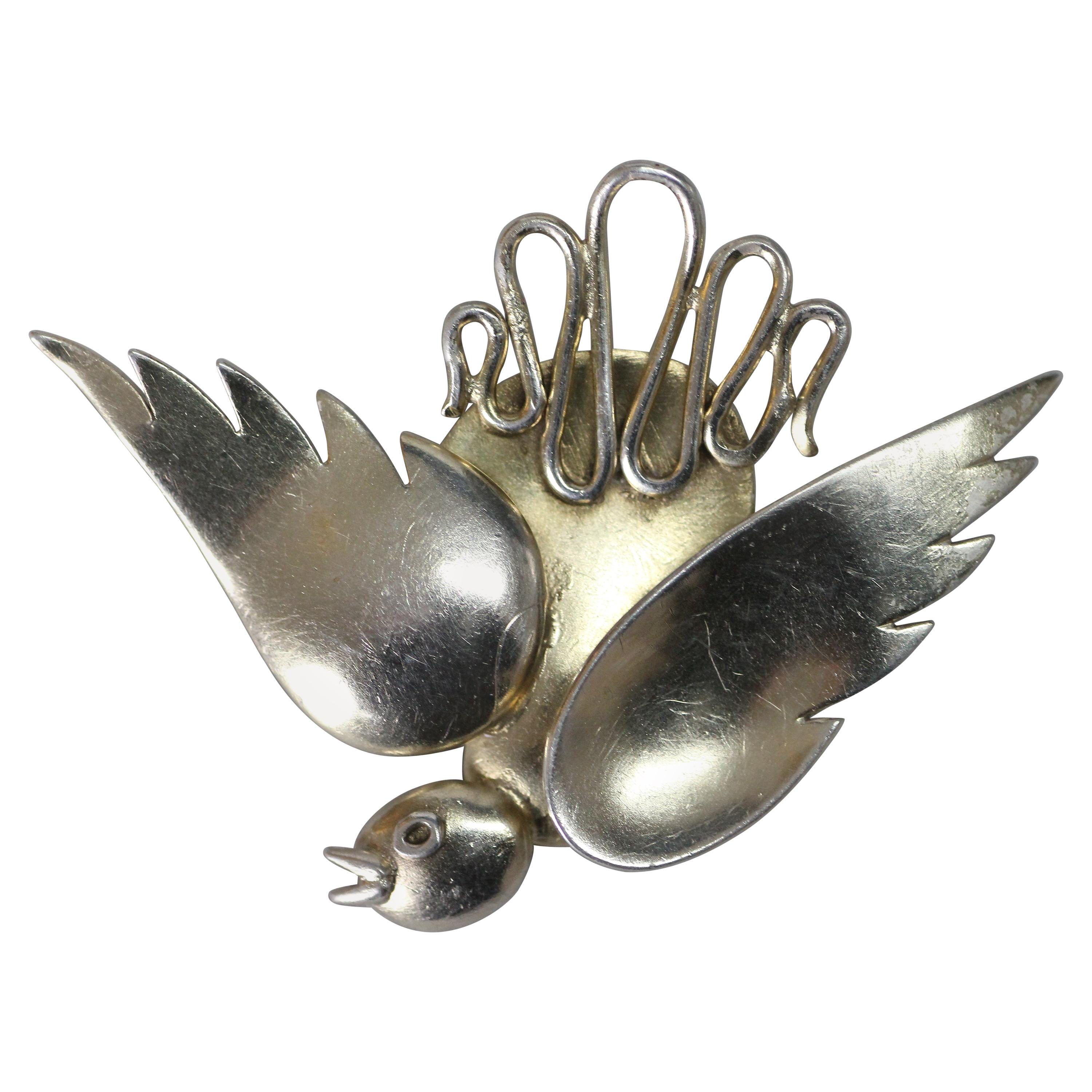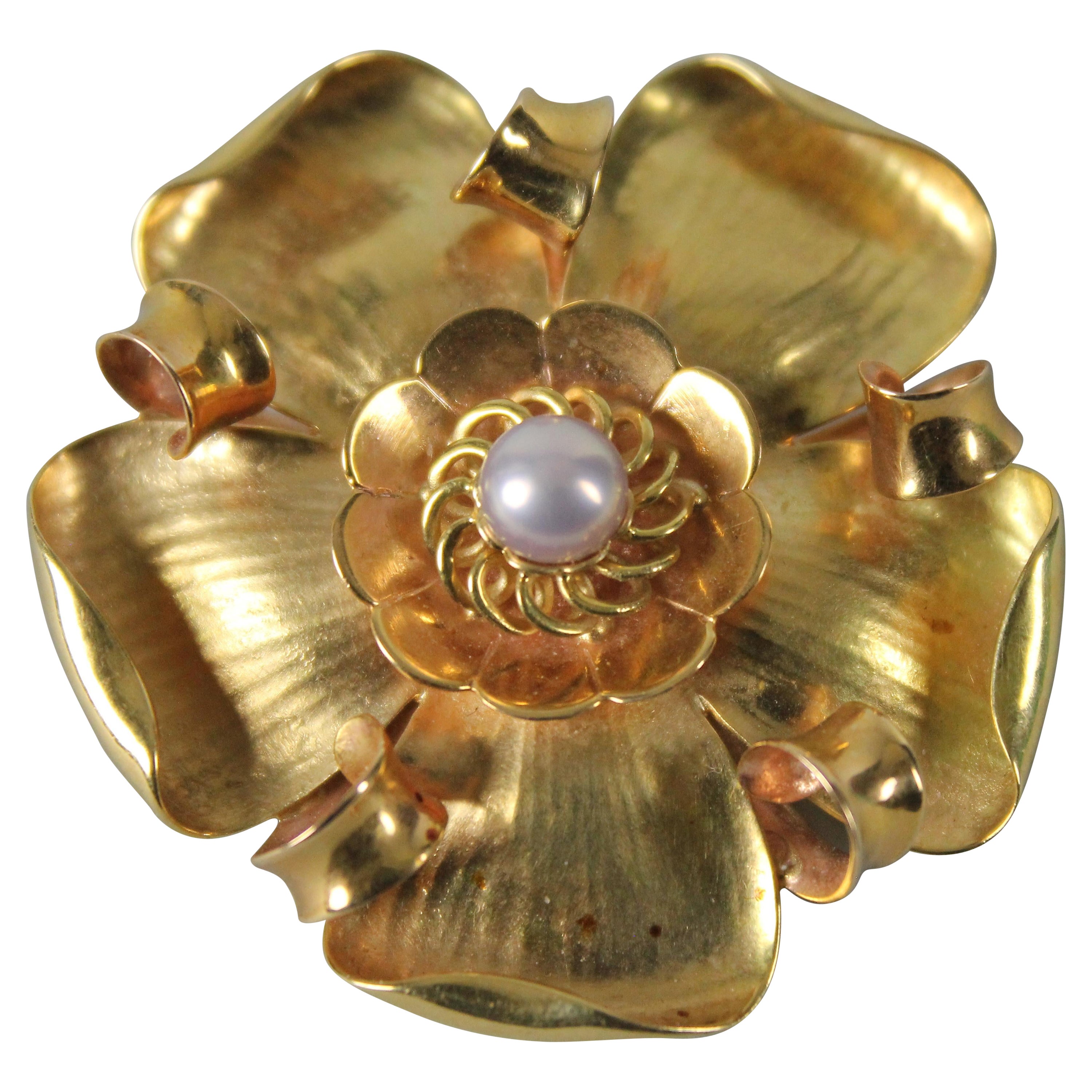Items Similar to Antique FabergeStyle 3AquamarineCabochons 4GreyDiamonds BezelSet Platinum Brooch
Want more images or videos?
Request additional images or videos from the seller
1 of 14
Antique FabergeStyle 3AquamarineCabochons 4GreyDiamonds BezelSet Platinum Brooch
About the Item
This antique Victorian platinum filigree bar-brooch or tie-pin from the Edwardian period in a Faberge style features bezel settings with three square-cut 10mm sugarloaf aquamarine cabochons with indistinct schiller and greenish sheen, plus four brilliant-cut gray diamonds with black inclusions. The last two photos were taken in natural light to best show the chatoyant effects in the open-backed semi-translucent blue stones, which appear like water refractions.
The fine details, arrangement, and combination of bezel settings in our 5.5-cm-long geometric piece strongly resemble the sapphire-and-diamond gold brooch #244 in the hardcover catalogue, Carl Faberge: Goldsmith To The Tsar, that accompanied the Nationalmuseum exhibition in Stockholm, Sweden, in 1997. Enabling light to enter from all around the bottom of the blue stones, the similarly aligned diamond-shaped settings are intricately decorated with serrated rims, as well as with rectangular-openwork filigree and embroidery-like punchwork found on other Faberge brooches before the family fled to Switzerland in war-time 1917. While our brooch is signed on the pin with an indistinguishable linear impression including letters, it is unclear without closeups precisely how the book piece is marked. Dating the brooch craftsmanship between 1896-1908 in St. Petersburg where Russian Cyrillic letters were used to mark Faberge works, the book notes that its brooch marks also included the initials of Faberge work-master Andrej Gorianov and assay-master A. Richter.
Helping to date our brooch to the early 1900s in Europe before the first world war, its C-clasp has a flip-up lever safety catch that was in use around 1900, while the modern safety clasp that soon made it obsolete was invented in 1911. Also, at the beginning of the 20th Century the use of yellow gold in jewelry wained, while interest in platinum and white metals surged.
Given the petit-point punchwork on our brooch that can be associated with the female Faberge jeweler Alma Theresia Pihl--the granddaughter of Faberge principal jeweler August Holmstrom--it is notable that her early works were unmarked or merely included an inventory number, such as her snowflake-inspired jewelry that included platinum. Further, according to the book, Faberge In The Royal Collection, published in London in 2003, her first major project was in 1912 when she created 40 small brooches that were ordered by one of Faberge's best customers Dr. Emanuel Nobel, whereafter the following year she designed her first Imperial Easter Egg.
- Metal:Platinum
- Stone:Diamond,Aquamarine,Black Diamond
- Stone Cut:Mixed Cut
- Weight:4 g
- Dimensions:Height: 0.6 in (15 mm)Width: 2.17 in (55 mm)Depth: 0.6 in (15 mm)
- Style:Edwardian
- Place of Origin:Europe
- Period:1900-1909
- Date of Manufacture:1900-1917
- Condition:Wear consistent with age and use.
- Seller Location:Chicago, IL
- Reference Number:1stDibs: LU3244219432012
About the Seller
5.0
Vetted Seller
These experienced sellers undergo a comprehensive evaluation by our team of in-house experts.
Established in 2012
1stDibs seller since 2022
9 sales on 1stDibs
Typical response time: 1 hour
- ShippingRetrieving quote...Ships From: North Adams, MA
- Return PolicyA return for this item may be initiated within 1 day of delivery.
More From This SellerView All
- MiriamHaskell WWII Era FrankHess GoldGiltCast Filigree Butterfly BroochBy Frank Hess for Miriam HaskellLocated in Chicago, ILA child of the Art Nouveau period, Miriam Haskell loved its butterfly design-motifs, which are found in many pieces of costume jewelry by her first designer Frank Hess. His butterfly...Category
Vintage 1940s American Art Nouveau Brooches
MaterialsYellow Gold, Gilt Metal, Base Metal
- MiriamHaskell c1929 FrankHess Rare FurClips GoldGiltBrass 3ChainFloraBow LariatBy Frank Hess for Miriam HaskellLocated in Chicago, ILAs one of Miriam Haskell's earliest fur clips from the late 1920s, these two Russian-gold gilt mostly brass brooches by her first designer Frank Hess are tethered as a lariat by thre...Category
Vintage 1930s American Baroque Revival Brooches
MaterialsYellow Gold, Brass, Gilt Metal
- Antique ArtNouveau Austria Scheid RareMark Pave BlueZircon Silver Snakes BroochBy Georg Adam ScheidLocated in Chicago, ILDuring the Art-Nouveau period while German-born Vienna-based silversmith, niello master, and entrepreneur Georg Adam Scheid (1837-1921) was prospering from a related refinery busines...Category
Early 20th Century Austrian Art Nouveau Brooches
MaterialsAquamarine, Diamond, Sapphire, Zircon, Silver, Sterling Silver
- 1938 ElsaSchiaparelli CouturePagan DeposeFrance FeatherCrystalGold Bird BroochBy Elsa SchiaparelliLocated in Chicago, ILUnusually decorated with small partridge feathers like the yellow-gold gilt necklace commissioned by Elsa Schiaparelli (1890-1973) that is featured on the front-and-back covers and centerfold of the French costume-jewelry hardcover book, Lina Baretti Parures, by Patrick Mauries, this unique pave-crystal yellow-gold gilt metal partridge-on-a-branch brooch is further distinguished as an unsigned Parisian-couture piece for Italian-born Schiaparelli with its combination of embossed text "Made In France" and "Modele Depose", along with the trombone clasp often used in the early 20th Century for custom-made French small brooches. The book centerfold on pages 90-91 shows a closeup of the feathered necklace created by French-born Corsican Baretti, whose intricate decoration often mixed ready-made textural or shiny materials like velvet, cork, wire, rhodoid or raffia with custom-made metal, plastic or glass by specialized Parisian workshops such as Gripoix. The Baretti-book caption about the attributed necklace notes: "Collier realise pour Elsa Schiaparelli. Liege, soie, cannetille, perles de verre et plumes de perdix. Chaine en metal." While none of the captions date this necklace--which could have been from the same commission as our brooch--Baretti created one-of-a-kind jewelry for Schiaparelli from the 1930s until the early 1950s when the fashion designer retired. Our brooch was most likely made for a fashion-show debut of one of Schiaparelli's themed clothing collections in the late 1930s for which she commissioned many costume-jewelry paruriers including Baretti. See our photo of a Schiaparelli 1930s...Category
Vintage 1930s French Artisan Brooches
MaterialsCrystal, Gold, Yellow Gold, Gilt Metal
- 1941 ChanelRelevant American Reinad ArtDecoStyle Silver PolkaDot LargeBow BroochBy ReinadLocated in Chicago, ILIn Spring 1941 after French fashion couturier Gabriel "Coco" Chanel had stopped production of her clothing designs while she remained in Europe during the WWII era, the decades-old American costume-jewelry company Reinad began imprinting pieces in its new retail line, Chanel Novelty Co, with the script signature "Chanel". As this was prior to the use of the sans-serif capital-letter signature "CHANEL" on French-made jewelry that was commissioned by the Parisian designer, as well as before U.S.-copyright protection began in 1955, the House of Chanel that was mostly owned by the Jewish Wertheimer family of venture capitalists (who remarkably still produced Parfums CHANEL and French-vineyard wine via legal proxy while they lived in asylum in The States during the war) filed a U.S. lawsuit to demand that Reinad halt the use of its founder's famous last name. As the Werthheimers' quickly won, Reinad only produced the single seasonal collection stamped with the French brand name, and subsequently only imprinted its company name as the sans-serif capital-letter signature "REINAD" without a copyright symbol, which was different that its prior signatures dating back to its founding in 1922. When Chanel herself resumed French-made fashion production in Paris in 1953 (with Werthheimer support leading to their acquisition of all rights to her name despite her post-war eight-year exile in Switzerland due to close association with Nazis), for the first time all of her creations were signed "CHANEL" like the original packaging of the exceedingly profitable "No.5" perfume. While Reinad continued to produced costume jewelry until 1954, in the last decade of this business, the U.S. company continued to try to appeal to potential Chanel buyers by at least making Chanel-style designs. As such, owning an attractive and well-made Reinad piece can be considered a useful investment in fashion history as evidence of a little-known turning-point involving the most famous ongoing luxury-fashion business Chanel, as well as of the impact of that legal judgement had on advancing U.S. design protection for brands that later used the copyright symbol. Like early ArtDeco-style oversized heavy metallic costume jewelry by Chanel, this three-dimensional monochrome silver-alloy polkadot bow brooch imitates a pale polkadot-textured ribbon. Notably, while high-quality ribbon for styling hair or decorating clothing in a non-functional way was still an expensive accessory...Category
Vintage 1940s American Art Deco Brooches
MaterialsRhodium, Silver, Base Metal
- MiriamHaskell WWII FrankHess PurpleGlassFlowersGoldLeaves WiredPlasticBackBroochBy Frank Hess for Miriam HaskellLocated in Chicago, ILBeginning in 1939, Miriam Haskell asked her first designer Frank Hess to sparingly use metal in the costume-jewelry collections during WWII while war materials were needed. So their ...Category
Vintage 1940s American Baroque Revival Brooches
MaterialsMixed Metal
You May Also Like
- Ladybug-Shaped Pendant and Brooch with Enamel of Various ColorsLocated in Rome, ITThe pendant in the shape of a ladybug with open wings, can be worn both as a pendant and as a brooch. The ladybug is decorated with transparent enamels of various colors. Its manufa...Category
Antique 19th Century Retro Pendant Necklaces
MaterialsEnamel
- Harald Nielsen for Georg Jensen Denmark BroochBy Harald NielsenLocated in Skanninge, SEA fine brooch by Harald Nielsen for Georg Jensen. Made during world war II. It is made in silver and patinated steel. This was something they did because of the war. Marked "HN GEOR...Category
Vintage 1940s Danish Modernist Brooches
MaterialsSterling Silver, Stainless Steel
- Matti J Hyvarinen a Set of Necklace, Earrings and a Brooch, Sterling, FinlandBy Matti J. HyvärinenLocated in Skanninge, SEA set of necklace, a pair of earrings, and a Brooch in sterling silver by Matti J Hyvarinen Finland. All parts marked "MJH 925". Made in the 1970s. V...Category
Vintage 1970s Finnish Modernist Brooches
MaterialsSterling Silver
- Atelier Borgila Stockholm 1944, Modernist Brooch in Gilt Sterling SilverBy Atelier BorgilaLocated in Skanninge, SEVery nice modernist brooch depicting a bird in flight. Gilded sterling silver with maker marks. Fine vintage condition, only some minor scratches. Atelier Borgila was founded by de...Category
Mid-20th Century Swedish Modernist Brooches
MaterialsSterling Silver
- Otto Strandman Art Nouveau 1914 Bacchus Silver Brooch, Stockholm SwedenLocated in Skanninge, SEBacchus the wine god by Otto Strandman (1871-1960), Stockholm 1914. Wonderful Swedish Art Nouveau silver brooch. Great condition, no issues. With full s...Category
Vintage 1910s Swedish Art Nouveau Brooches
MaterialsSilver
- Erik Fleming for Borgila 18k Gold Brooch, Stockholm Sweden, 1944By Atelier BorgilaLocated in Skanninge, SEWonderful 18k gold brooch depicting a flower. Made by Erik Fleming (1894-1954) for Borgila. 18k gold together with one pearl. Great condition, no issues. Diameter 4.5cm (in 1.78)Category
Vintage 1940s Swedish Modernist Brooches
Materials18k Gold
Recently Viewed
View AllMore Ways To Browse
Yellow Gold Diamond Star Brooch
Star Tiffany Gold
Edwardian Tiffany Brooch
Tiffany And Co India
Tiffany And Co Watering Can
Louis Comfort Tiffany Brooch
Tiffany Diamond Bar Brooch
Pale Tiffany Blue
Edwardian Star Brooch
Tiffany Antique Moonstone
Platinum Brooch Geometric
Brown Old Mine Cut
Brown Old Mine Diamond
Antique Tiffany Old Mine
Cow Brooch
Wyvern Brooch
Louis Vuitton Bling Bag
Vintage Patriotic Pins
